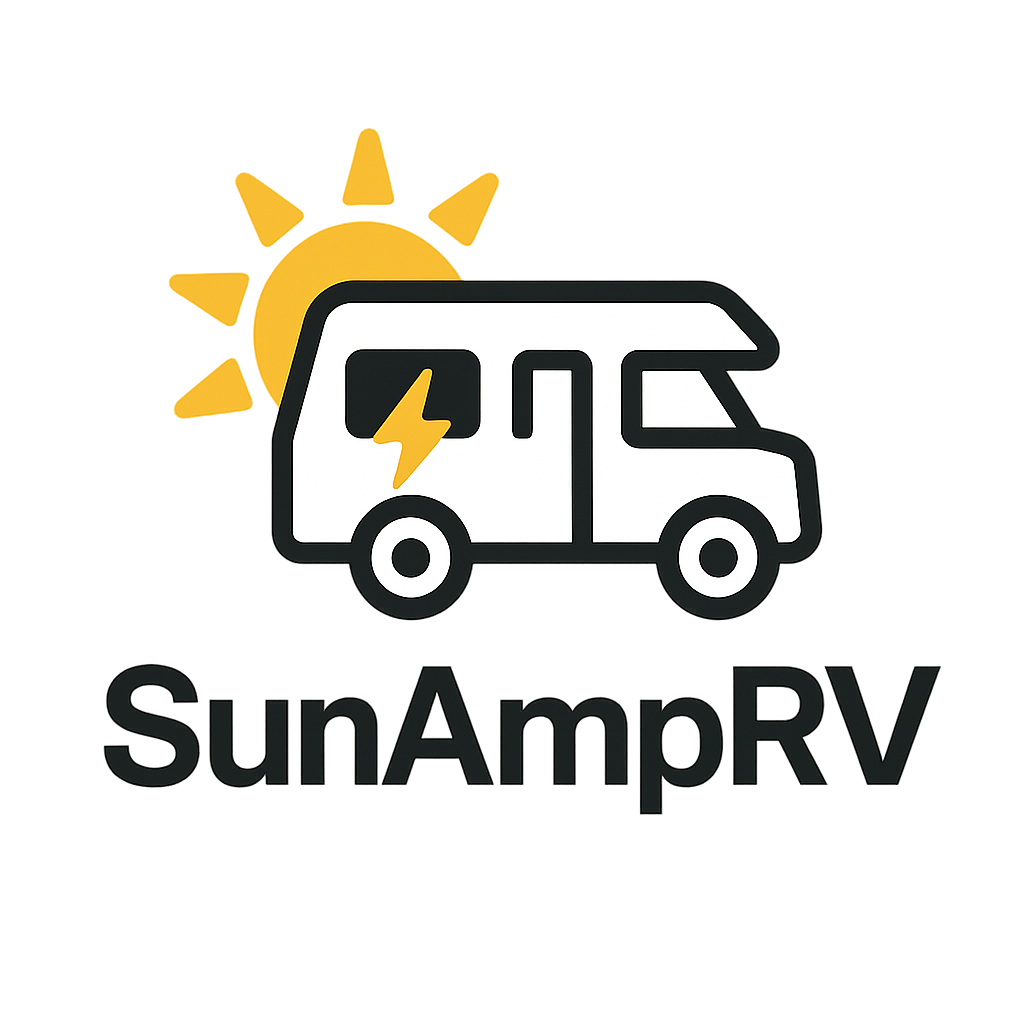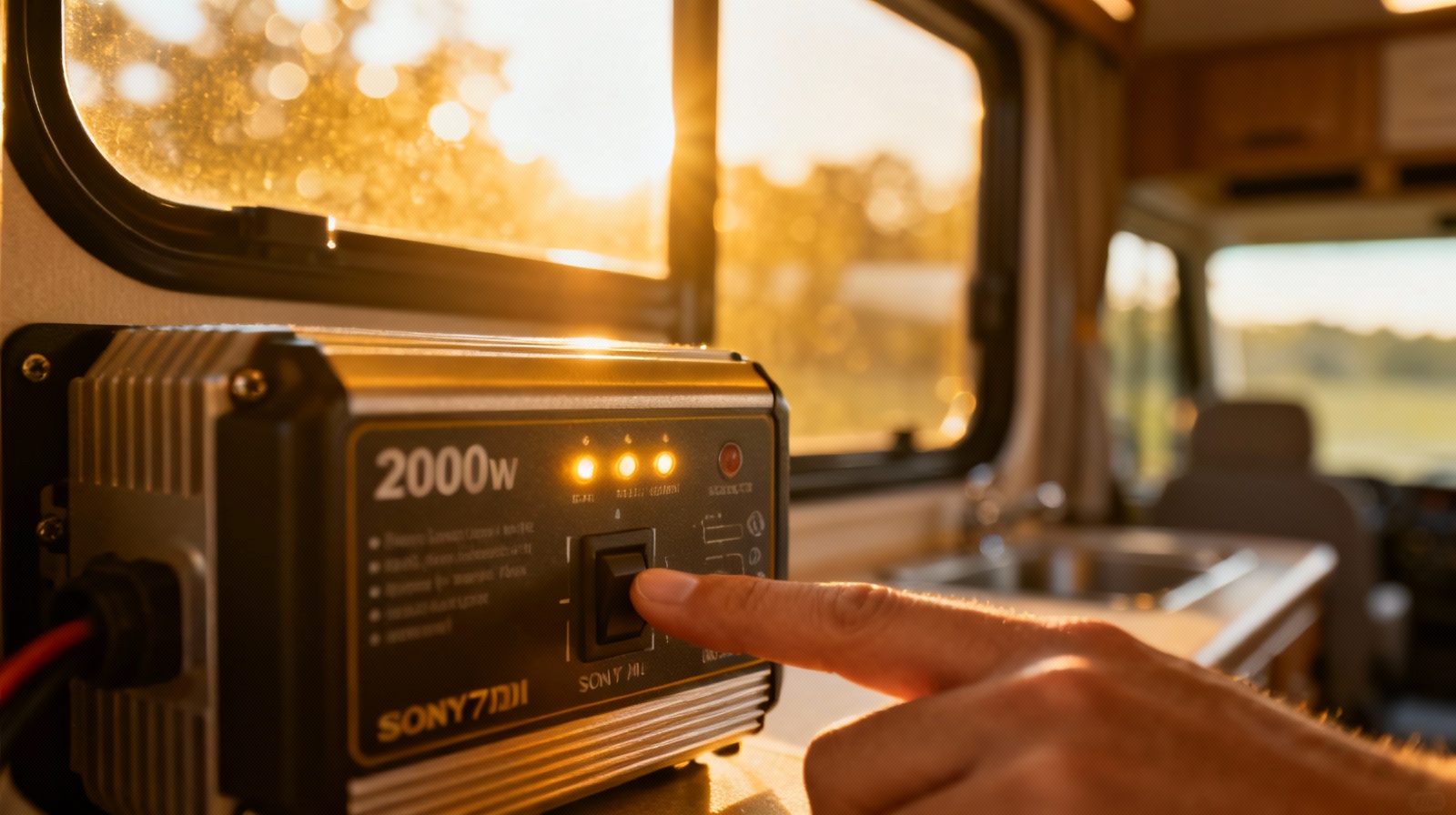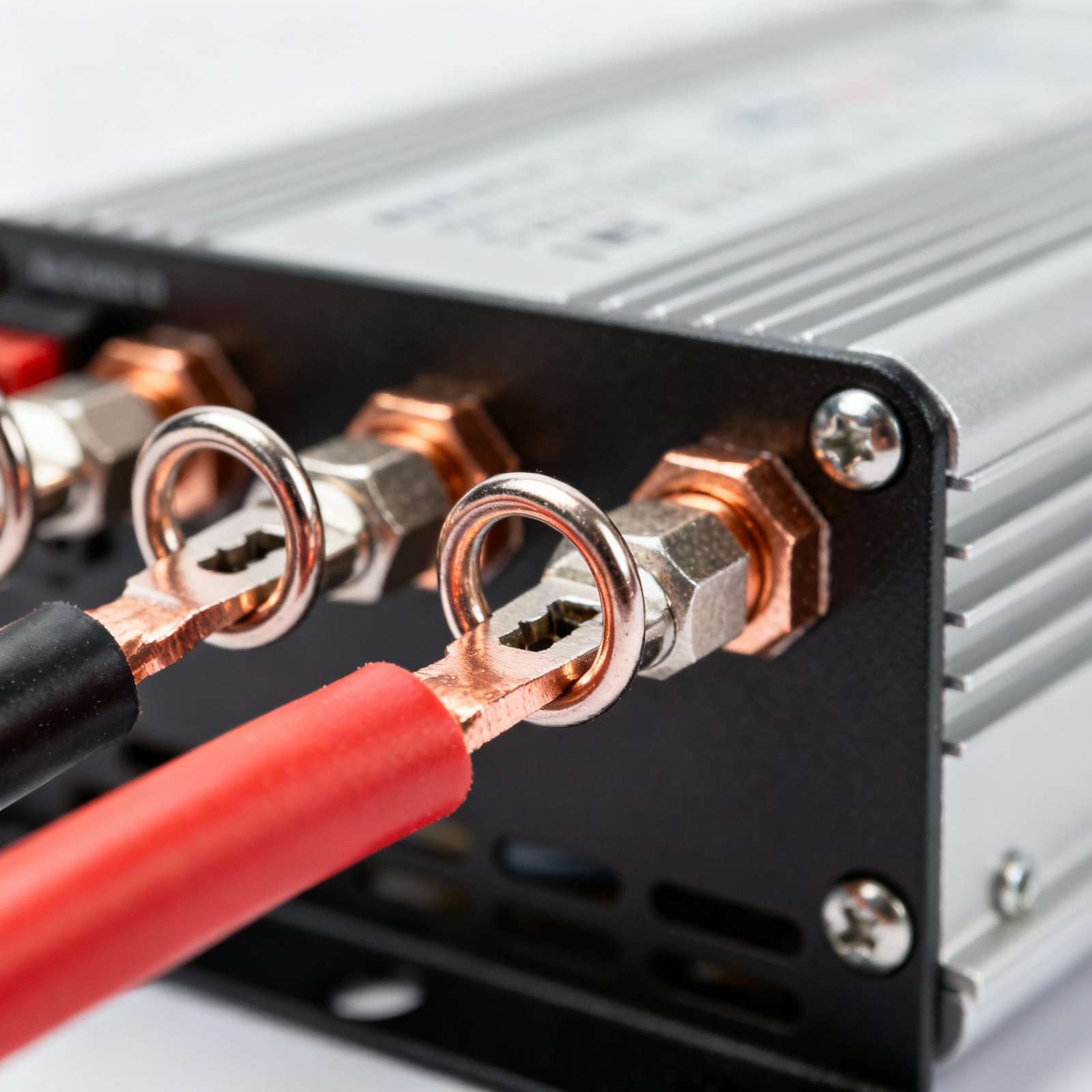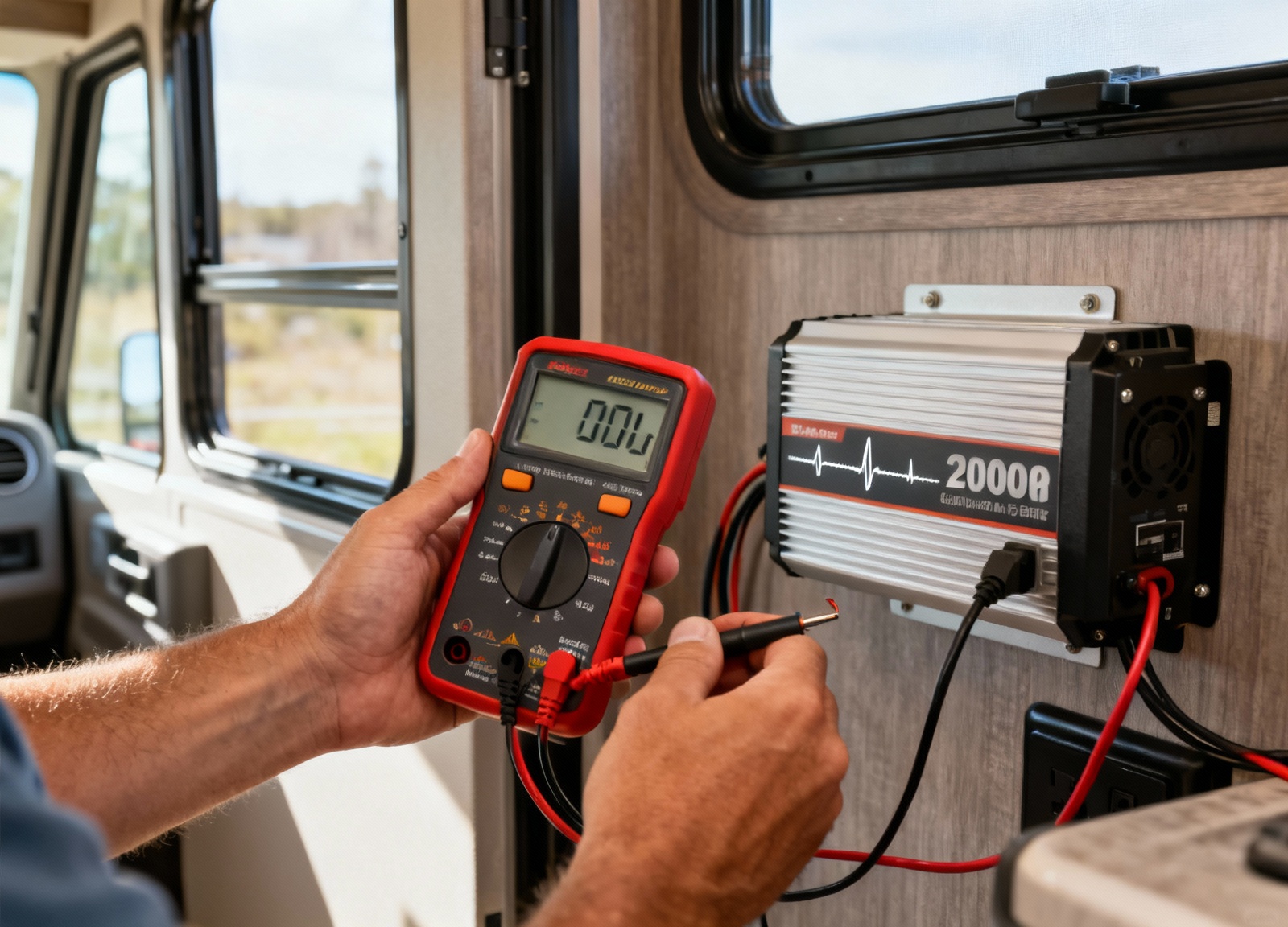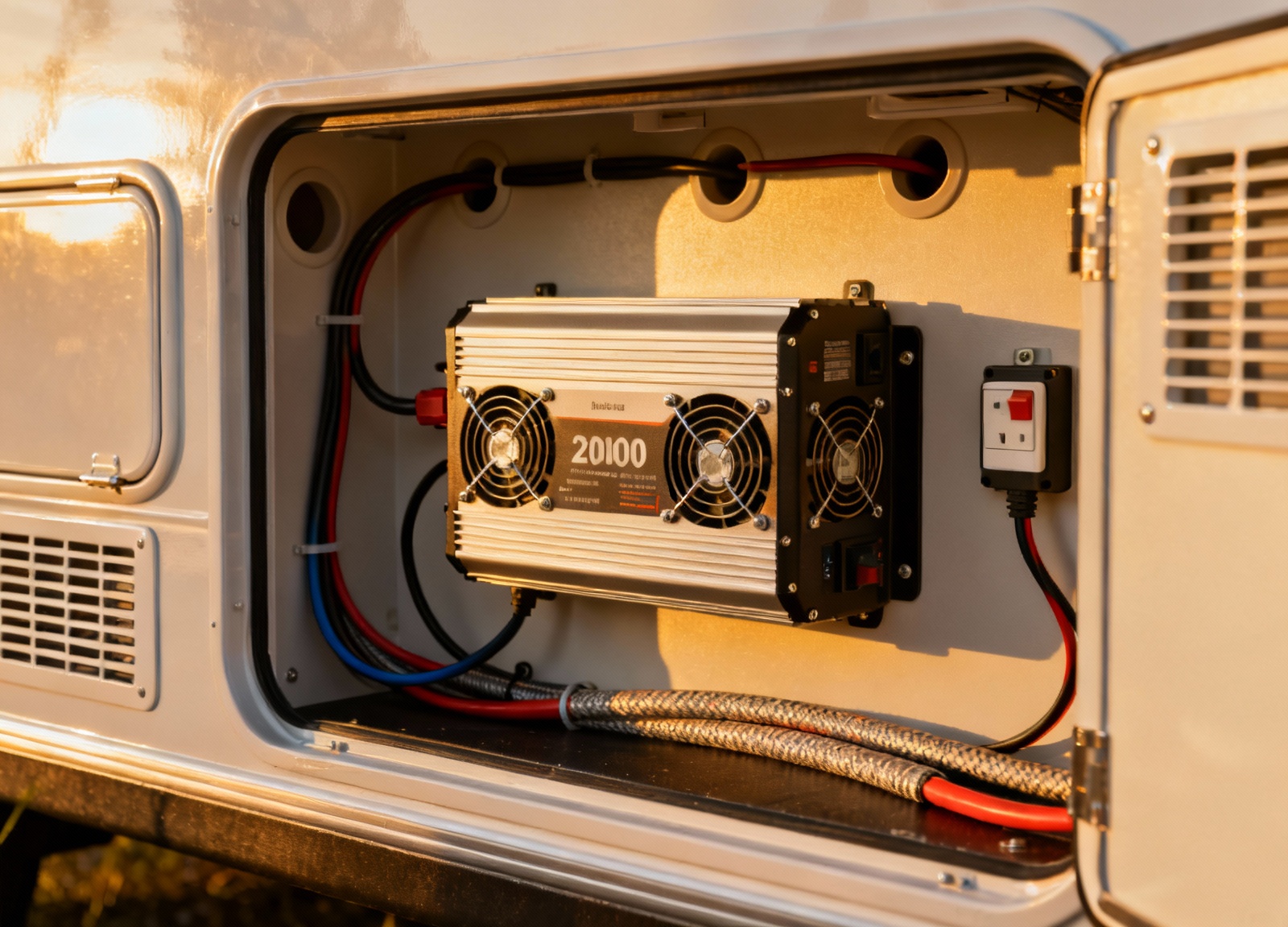Top Picks
#7 Goal Zero Boulder 100W Briefcase Solar Panel
Safety & Common Mistakes
How many solar panels do I need for my RV?
Can I mix different wattage panels?
TL;DR — Best Picks
Best RV Solar Picks for 2025
#7 Goal Zero Boulder 100W Briefcase Solar Panel
Key Specs: 100W portable, 18-22V output, 25.9 lbs, kickstand included View on Amazon
- Pro: Portable briefcase design for temporary setups
- Pro: Built-in kickstand optimizes angle
- Pro: Tempered glass protects cells during transport
- Con: Premium pricing compared to fixed panels
- Con: Heavy for a portable solution
Comparison Table
| Model | Type | Key Specs | Best for | Pros | Cons |
|---|---|---|---|---|---|
| Renogy 200W | Rigid Mono | 200W, 18.9V, 39.7 lbs | Full-time RVers | High output, durable, warranty | Heavy, requires drilling |
| BougeRV 180W | Rigid Mono | 180W, 9BB tech, 26.5 lbs | Tech-savvy installers | Advanced busbar, weatherproof | Lower wattage, availability |
| HQST 100W | Rigid Poly | 100W, 17.6V, 16.5 lbs | Budget-conscious weekenders | Affordable, lightweight | Lower efficiency, more space needed |
| Rich Solar Flex | Flexible Mono | 100W, 4.2 lbs, 30° bend | Curved roof owners | Ultra-light, no drilling, walkable | Heat buildup, shorter life |
| Newpowa 160W | Rigid Mono | 160W, SunPower cells, 22 lbs | Space-limited installations | Efficient cells, corrosion-resistant | Odd sizing, limited kits |
| WindyNation Kit | Poly Kit | 100W panel + PWM + cables | First-time installers | Complete package, good support | PWM only, basic hardware |
| Goal Zero Boulder | Portable Mono | 100W briefcase, kickstand | Occasional boondockers | Portable, adjustable angle | Expensive, heavy for portable |
Which Solar Panel Should You Buy?
Your ideal RV solar panel depends heavily on your camping style and power needs.
Full-time RVers should prioritize the Renogy 200W or multiple BougeRV 180W panels for serious power generation. These high-output rigid panels deliver consistent performance year-round, though they require permanent roof mounting. The investment pays off quickly when you’re living off-grid regularly.
Weekend warriors and seasonal campers often find the HQST 100W polycrystalline panels offer the best value. While slightly less efficient than monocrystalline options, the cost savings allow you to buy multiple panels for expanded capacity. The WindyNation kit particularly suits beginners since it includes everything needed for basic installation.
RVs with curved roofs or limited structural support benefit from Rich Solar’s flexible panels. These featherweight panels adhere directly to the roof without penetrations, though they sacrifice some longevity and efficiency compared to rigid alternatives. The 30-degree bend radius accommodates most Airstream and teardrop trailer profiles.
Occasional boondockers who prefer not to modify their RV should consider the Goal Zero Boulder briefcase. Despite the premium price, the portability lets you chase the sun throughout the day and store the panel securely when traveling.
Understanding Solar Panel Technologies
Monocrystalline panels dominate the RV market for good reason.
Their uniform black appearance comes from single-crystal silicon construction, which enables electron flow with minimal resistance. This translates to 15-20% efficiency ratings, meaning more power from limited roof space. The technology particularly excels in partial shade conditions where individual bypass diodes can isolate affected sections.
Polycrystalline panels use multiple silicon crystals melted together, creating a distinctive blue speckled appearance. While their 13-16% efficiency trails monocrystalline options, the simpler manufacturing process reduces costs by 20-30%. For RVers with ample roof space and tight budgets, polycrystalline panels deliver acceptable performance at attractive price points.
The emergence of 9-busbar and half-cut cell technologies represents the next evolution in panel efficiency. Traditional panels use 3-5 busbars (the visible lines across cells) to collect electricity. Increasing to 9 or more busbars shortens the distance electrons travel, reducing resistance losses. Half-cut cells take this further by dividing each cell in two, creating parallel circuits that maintain output even when partially shaded.
Installation Considerations
Roof real estate becomes precious when planning your solar array. Most RVs accommodate 400-800W of panels after accounting for air conditioners, vents, and antennas. Measure your available space carefully, remembering to leave 2-3 inches between panels for expansion and airflow.
Many installers create cardboard templates before purchasing to visualize the layout.
Wiring configuration significantly impacts system performance. Series connections add voltages while maintaining current, ideal for MPPT controllers and long wire runs. Parallel connections add currents while maintaining voltage, better for PWM controllers and shading tolerance. Most RV systems benefit from series-parallel combinations that balance both advantages.
Mounting hardware varies between manufacturers but generally falls into Z-brackets, corner brackets, or adhesive systems. Z-brackets lift panels 1-2 inches off the roof, improving cooling and simplifying cleaning. Corner brackets minimize wind resistance but trap more debris. Adhesive mounting suits flexible panels but makes future removal challenging. Whatever method you choose, use appropriate sealants like Dicor or EternaBond to prevent leaks.
Maximizing Solar Harvest
Panel angle dramatically affects power output, with optimal positioning varying by season and latitude. Summer sun tracks higher, favoring flatter angles around 20-30 degrees. Winter sun stays lower, requiring steeper 45-60 degree tilts. While adjustable mounts exist, most RVers accept the compromise of flat mounting for simplicity and aerodynamics.
Temperature coefficients reveal an uncomfortable truth about solar panels: they produce less power when hot.
Every degree above 25°C (77°F) reduces output by 0.3-0.5%. This explains why a 100W panel might only generate 75-80W on scorching summer days despite abundant sunshine. Ensuring adequate ventilation beneath panels helps maintain efficiency.
Shading remains the silent killer of solar production. Even a small shadow from a tree branch or antenna can reduce output by 50% or more. Modern panels include bypass diodes that route power around shaded cells, but the protection isn’t perfect. When possible, park with unobstructed southern exposure and trim overhanging branches at campsites.
Safety & Common Mistakes
- Install DC-rated breakers between panels and charge controller to isolate faults
- Use MC4 connectors rated for outdoor use; avoid splicing wires with tape
- Ground panel frames to RV chassis using 10AWG wire minimum
- Check roof structure can support panel weight plus snow loads
- Apply dielectric grease to connections preventing corrosion
- Never connect or disconnect panels under load; cover them first
Disclaimer: Always follow manufacturer instructions and local electrical codes.
Maintenance and Troubleshooting
Regular cleaning maintains peak performance, though opinions vary on frequency.
Desert camping requires weekly washing to remove dust that can reduce output by 25%. Forest environments need less frequent cleaning but watch for sap and bird droppings that create hot spots. Use soft brushes with mild detergent, avoiding abrasive materials that scratch protective coatings.
Visual inspections catch problems before they escalate. Look for delamination (bubbling between glass and cells), browning cells, or cracked backsheets. Check junction boxes for moisture intrusion and ensure cable glands remain tight. Thermal imaging cameras, now affordable as smartphone attachments, reveal hot spots indicating failing cells or connections.
Performance monitoring helps identify degradation over time. Most panels lose 0.5-0.8% efficiency annually, with quality panels maintaining 80% output after 25 years. If production drops suddenly, check connections first, then shading, then controller settings. Many modern charge controllers include Bluetooth monitoring that logs daily harvest for easy troubleshooting.
Cost Analysis and Payback
Initial investment for a basic 400W RV solar system runs $800-1,500 including panels, controller, wiring, and mounting hardware. Professional installation adds $500-1,000 depending on complexity. While substantial, compare this to campground fees averaging $35-50 per night with hookups.
Boondockers who previously relied on generators see immediate savings.
Running a 2000W generator 4-6 hours daily consumes 0.5-1 gallon of fuel. At $4 per gallon, that’s $60-120 monthly. Solar eliminates this expense while providing silent, emission-free power. The system typically pays for itself within 12-18 months of regular use.
Beyond direct savings, solar enables freedom to camp in pristine locations without hookups. National Forest and BLM lands offer free or low-cost camping with spectacular views. This lifestyle shift from crowded RV parks to secluded natural settings represents solar’s true value for many RVers.
Recommended Gear
- Victron SmartSolar MPPT 100/30 — View on Amazon
- Renogy 200W Monocrystalline Panel — View on Amazon
- Battle Born 100Ah LiFePO4 Battery — View on Amazon
- AIMS 2000W Pure Sine Inverter — View on Amazon
- Victron BMV-712 Battery Monitor — View on Amazon
FAQs
- How many solar panels do I need for my RV? How many solar panels do I need for my RV? Weekend camping typically requires 100-200W, while full-time living needs 400-800W. Calculate your daily amp-hour consumption and size panels to replace 120% of that usage accounting for inefficiencies.
- Can I mix different wattage panels? Can I mix different wattage panels? Yes, but wire identical panels in series first, then combine strings in parallel. Mismatched panels in series limit output to the weakest panel’s current. MPPT controllers handle mixed arrays better than PWM.
- Do flexible panels last as long as rigid panels? Do flexible panels last as long as rigid panels? Flexible panels typically last 5-10 years versus 25+ for quality rigid panels. Heat buildup from direct mounting accelerates degradation. Consider flexible panels temporary solutions or for weight-critical applications.
- Should I install panels myself or hire a professional? Should I install panels myself or hire a professional? Handy RVers can handle basic installations with proper research and tools. Professional installation ensures warranty compliance, proper sealing, and code-compliant wiring. Complex systems with multiple panels benefit from professional expertise.
- Will solar panels void my RV warranty? Will solar panels void my RV warranty? Roof penetrations may affect roof warranties, but the Magnuson-Moss Act prevents voiding entire RV warranties for modifications. Document installation carefully and use approved sealants. Some dealers offer solar installation maintaining warranty coverage.
- Can solar panels power my RV air conditioner? Can solar panels power my RV air conditioner? Technically yes, but it requires substantial investment. A 13,500 BTU AC needs 1,500-2,000W of panels, 400Ah+ of lithium batteries, and a 3,000W inverter. Soft-start devices reduce startup surge, making solar AC more feasible.
As an Amazon Associate, we earn from qualifying purchases. This helps keep SunAmpRV running.
